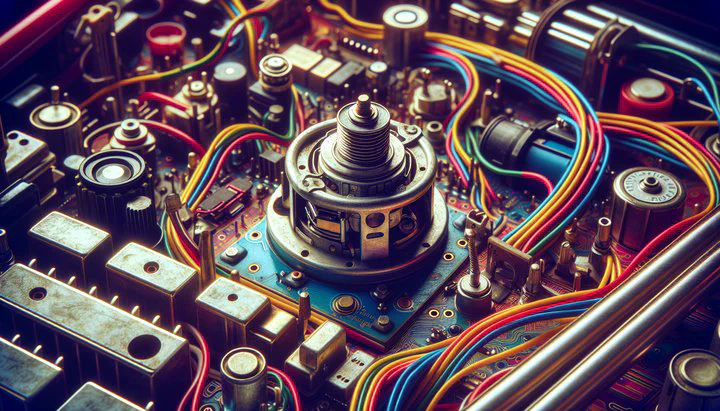Solenoid Warm Up Issue

Understanding Solenoid Warm Up
Are you finding that your vintage pinball machine isn’t quite responsive right away? You might be dealing with a solenoid warm up issue. Solenoids are crucial components in pinball machines, responsible for making all those exciting flipper flips and bumper hits happen. But why do these solenoids need to warm up before they start working properly?
Let’s start by understanding what a solenoid is. Imagine a tiny electric switch inside your pinball game that makes things move when you press the buttons. That’s a solenoid! It works by using electricity to create a magnetic field, which then moves a metal rod. This movement is what makes the flippers flip and the ball bounce around. However, like any machine, solenoids can be a bit fussy and sometimes need a little time to get going.
The reason solenoids need to warm up has a lot to do with temperature and how it affects their performance. When the pinball machine is first turned on, the solenoids might not be at their optimal temperature for operation. Cold solenoids might not work right away, so you have to press the flippers a few times before they start working. As they warm up, the metal parts inside them expand slightly, reducing resistance and making them work more smoothly. Once they begin working, they work perfectly, delivering the fast, responsive action you expect from your pinball machine.
Understanding this warm-up period is crucial for troubleshooting and maintaining your pinball machine. Knowing that the solenoid needs to “warm up” can help you spot problems early. In the next sections, we’ll explore how to troubleshoot these warm-up problems and share tips for keeping those solenoids in top shape.
Troubleshooting Solenoid Warm Up Problems
Dealing with a solenoid warm up issue in your vintage pinball machine can be frustrating, especially when you’re eager to start playing. But don’t worry—there are ways to troubleshoot and fix these pesky problems. Let’s go through some common symptoms and practical solutions to get your machine back to top performance.
Common Symptoms:
- You have to press the flippers multiple times before the solenoids begin to work.
- The flippers are slow to respond or the bumpers don’t activate right away.
- The machine works fine after a few minutes of play, showing that once they begin working, they work perfectly.
Step-by-Step Troubleshooting:
- Check the Basics: Ensure your pinball machine is plugged in properly and that all the connections are secure. Loose wires can sometimes cause intermittent issues.
- Listen for Noises: Does your machine make strange noises when you turn it on? A buzzing or clicking sound might indicate that the solenoid is trying to work but isn’t fully engaging.
- Inspect the Solenoids: Carefully open the machine and look for any signs of wear or damage on the solenoids. Sometimes, dirt or debris can cause them to stick, so gently clean around them using a soft cloth or brush.
Practical Solutions:
- If cleaning doesn’t resolve the issue, you might need to lubricate the solenoids. Use a non-conductive lubricant specifically designed for electronics. Apply it sparingly to the moving parts to help them slide more smoothly.
- If the problem continues, consider replacing the solenoids if they are worn out or damaged beyond repair.
By following these steps, you can usually address the solenoid warm up issue effectively. In the next section, we’ll discuss how to maintain your solenoids to prevent these problems from cropping up again.
Maintaining Solenoids for Optimal Performance
Keeping your pinball machine in tip-top shape requires regular maintenance, especially when it comes to the solenoids. These small but mighty components are crucial for the smooth operation of your machine. A little TLC goes a long way in ensuring they perform well, even when they need to warm up.
Regular Maintenance Routine:
- Power off your machine and safely open it up to inspect the solenoids. Look for any visible signs of wear, such as frayed wires or stuck parts.
- Cleaning should be part of your routine. Use a soft brush or cloth to gently remove any dust or debris that could cause sticking.
Preventive Measures:
- To avoid solenoid warm up issues, keep the machine’s environment stable. Extreme temperatures can affect solenoid performance. Try to keep your pinball machine in a room that doesn’t get too hot or cold. Consistent temperature helps ensure that once they begin working, they work perfectly.
Tools and Products:
- Investing in the right tools can make maintenance easier. A multimeter is handy for checking electrical connections, ensuring they are transmitting power correctly.
- You might also want to have a non-conductive lubricant on hand. This can be applied to moving parts to keep them operating smoothly. Just remember, a little goes a long way!
By maintaining your solenoids regularly, you help extend their lifespan and prevent annoying problems like having to press the flippers multiple times before the solenoids begin to work. With a bit of care, your vintage pinball machine can provide endless hours of fun.
Remember, the key to solving a solenoid warm up issue often lies in simple, regular maintenance. By keeping your solenoids in check, you ensure your pinball machine is always ready for action. Share your experiences and tips with fellow enthusiasts to keep the retro gaming community thriving!